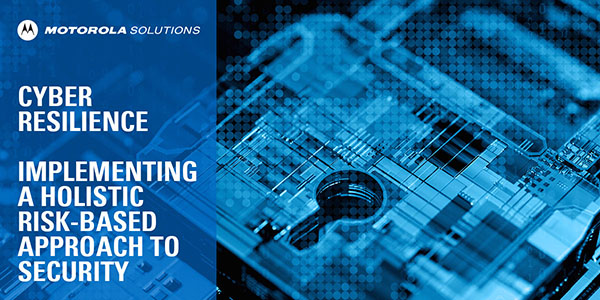Cybersecurity Arena Faces Growing Shortage of Qualified Professionals Author: Troy Mattern
Cyber crime continues to proliferate across the globe with the number of data breaches on an upward trend. The result is an immense demand for skilled security professionals to address growing concerns. Unfortunately, the availability of security experts is a challenge for organisations and agencies – and is only expected to get worse. Already, the cybersecurity workforce gap is on pace to hit three million globally.
This growing gap will have a significant impact on the industry. Organisations who find themselves with a shortage of security personnel are at risk of slowed adoption and implementation of the critical tools needed for cybersecurity efforts – opening them up to potential breaches and attacks. When looking at effectively securing infrastructure, 87 percent of companies believe that hiring and retaining qualified security professionals is critical.
Yet, despite efforts to increase hiring and fill needed positions, demand continues to outpace supply. Today’s organisations face a staffing problem that is more logistical than financial – with security budgets increasing but talent recruitment continuing to be a challenge.
The growing workforce shortage is being driven by a lack of qualified personnel – with a large segment of the available workforce lacking the requisite skills that enterprises need. Sixty-four percent of organisations report that only half of their applicants are qualified for an open security position – with technical skills being the biggest existing skills gap. For public safety and government agencies, there is the additional challenge of competing with private, enterprise organisations that can be more attractive to potential talent.
Unfortunately, traditional recruitment methods are falling short. It is not uncommon for cybersecurity workers to arrive at their roles through unconventional paths. In fact, 87 percent of current professionals did not start their careers in cybersecurity – but rather moved into the field from a wide variety of other professions including information technology. Further compounding the issue is a lack of training, with only three of the top 50 US university computer science programs requiring cybersecurity coursework.
In order to close the gap, hiring managers need to explore new recruitment and development channels and find innovative strategies and techniques to engage potential professionals. This can include professional development programs, training and apprenticeships to grow security talent.
Filling the long-term, growing cybersecurity skills gap is critical. But organisations have a need for professionals now. For companies in need of security expertise, partnering with an organisation that can provide cybersecurity support and services may be the solution. These organisations are prepared to work with companies to safeguard their critical communication networks and technologies and are trained to stay actively informed of the rapidly changing landscape of security threats and compliance requirements. Read the full Motorola Solutions White Paper to learn more about the need for cybersecurity experts.

You can learn more about our cybersecurity solutions at www.motorolasolutions.com/cybersecurity

Troy Mattern is Vice President of Cybersecurity Products and Services at Motorola Solutions.
Troy is on LinkedIn
This post was originally published in our sister blog for North America.
Follow @MotSolsEMEA on Twitter and look out for #ThinkPublicSafety


Blog
Cybersecurity Arena Faces Growing Shortage of Qualified Professionals Author: Troy Mattern
Cyber crime continues to proliferate across the globe with the number of data breaches on an upward trend. The result is an immense demand for skilled security professionals to address growing concerns. Unfortunately, the availability of security experts is a challenge for organisations and agencies – and is only expected to get worse. Already, the cybersecurity workforce gap is on pace to hit three million globally.
This growing gap will have a significant impact on the industry. Organisations who find themselves with a shortage of security personnel are at risk of slowed adoption and implementation of the critical tools needed for cybersecurity efforts – opening them up to potential breaches and attacks. When looking at effectively securing infrastructure, 87 percent of companies believe that hiring and retaining qualified security professionals is critical.
Yet, despite efforts to increase hiring and fill needed positions, demand continues to outpace supply. Today’s organisations face a staffing problem that is more logistical than financial – with security budgets increasing but talent recruitment continuing to be a challenge.
The growing workforce shortage is being driven by a lack of qualified personnel – with a large segment of the available workforce lacking the requisite skills that enterprises need. Sixty-four percent of organisations report that only half of their applicants are qualified for an open security position – with technical skills being the biggest existing skills gap. For public safety and government agencies, there is the additional challenge of competing with private, enterprise organisations that can be more attractive to potential talent.
Unfortunately, traditional recruitment methods are falling short. It is not uncommon for cybersecurity workers to arrive at their roles through unconventional paths. In fact, 87 percent of current professionals did not start their careers in cybersecurity – but rather moved into the field from a wide variety of other professions including information technology. Further compounding the issue is a lack of training, with only three of the top 50 US university computer science programs requiring cybersecurity coursework.
In order to close the gap, hiring managers need to explore new recruitment and development channels and find innovative strategies and techniques to engage potential professionals. This can include professional development programs, training and apprenticeships to grow security talent.
Filling the long-term, growing cybersecurity skills gap is critical. But organisations have a need for professionals now. For companies in need of security expertise, partnering with an organisation that can provide cybersecurity support and services may be the solution. These organisations are prepared to work with companies to safeguard their critical communication networks and technologies and are trained to stay actively informed of the rapidly changing landscape of security threats and compliance requirements. Read the full Motorola Solutions White Paper to learn more about the need for cybersecurity experts.
You can learn more about our cybersecurity solutions at www.motorolasolutions.com/cybersecurity
Troy Mattern is Vice President of Cybersecurity Products and Services at Motorola Solutions.
Troy is on LinkedIn
This post was originally published in our sister blog for North America.
Follow @MotSolsEMEA on Twitter and look out for #ThinkPublicSafety
Increasing Connectivity Exposes New Cyber Attack Vectors Author: Troy Mattern
Can your cell phone be used to steal your email password or fingerprint data? Can hackers access personal information from your heart rate monitor, fitness tracker or smartwatch? What may have once sounded like science fiction is rapidly becoming reality.
We now live in an era of connectivity – with digitally connected devices permeating every aspect of our lives. In fact, as soon as 2020, the number of connected devices will reach more than 21 billion. This level of interconnectedness is enabling people and businesses to do things never before imagined – from home automation to environmental monitoring.
Today’s increasingly connected world is also introducing more attack vectors and more possibilities for cyber crime. Unfortunately, some of the most commonly used interconnected devices contain vulnerabilities. At a recent DEF CON, 47 vulnerabilities affecting 23 connected items – including webcams, door locks, thermostats and baby monitors – were disclosed. With these vulnerabilities, cyber criminals now have more entry points and can move laterally across networks. As a result, cyber attacks can have far more extensive effects than ever before. Despite this information, 80 percent of organisations do not routinely test their IoT apps for security vulnerabilities.
Developing resilience to withstand cyber attacks is critical to future success. Safeguarding software and connected devices – and making it as difficult as possible for exploitation – will help to improve overall organisation system security.
Organisations must be proactive and operate in a state of readiness. Embracing a holistic, risk-based strategy enables organisations to manage their risk awareness, security, detection, response and recovery. By focusing on mitigation options, continuous monitoring, diagnosis and remediation, companies are better able to protect themselves and proactively confront potential situations before they become an acute threat.
Read the full Motorola Solutions White Paper here to learn more about the emergence of new attack vectors and how a holistic strategy can help defend against emerging cyber threats.
You can learn more about our cybersecurity solutions at www.motorolasolutions.com/cybersecurity
Troy Mattern is Vice President of Cybersecurity Products and Services at Motorola Solutions.
Troy is on LinkedIn
Follow #ThinkPublicSafety, @MotsolsEMEA on Twitter
This post was originally published in our sister blog for North America - Fresh Ideas In Public Safety